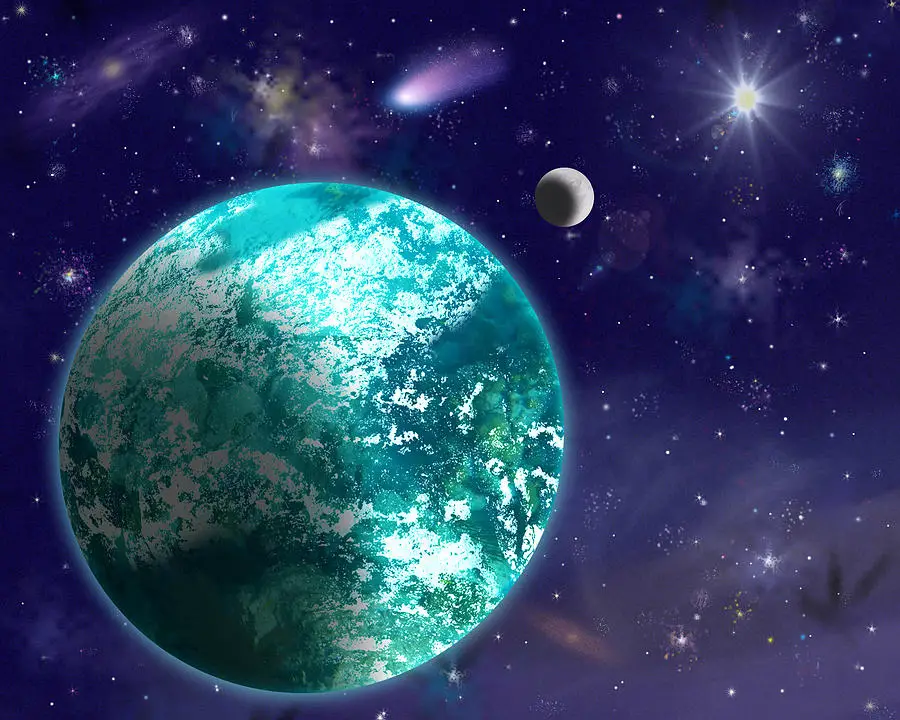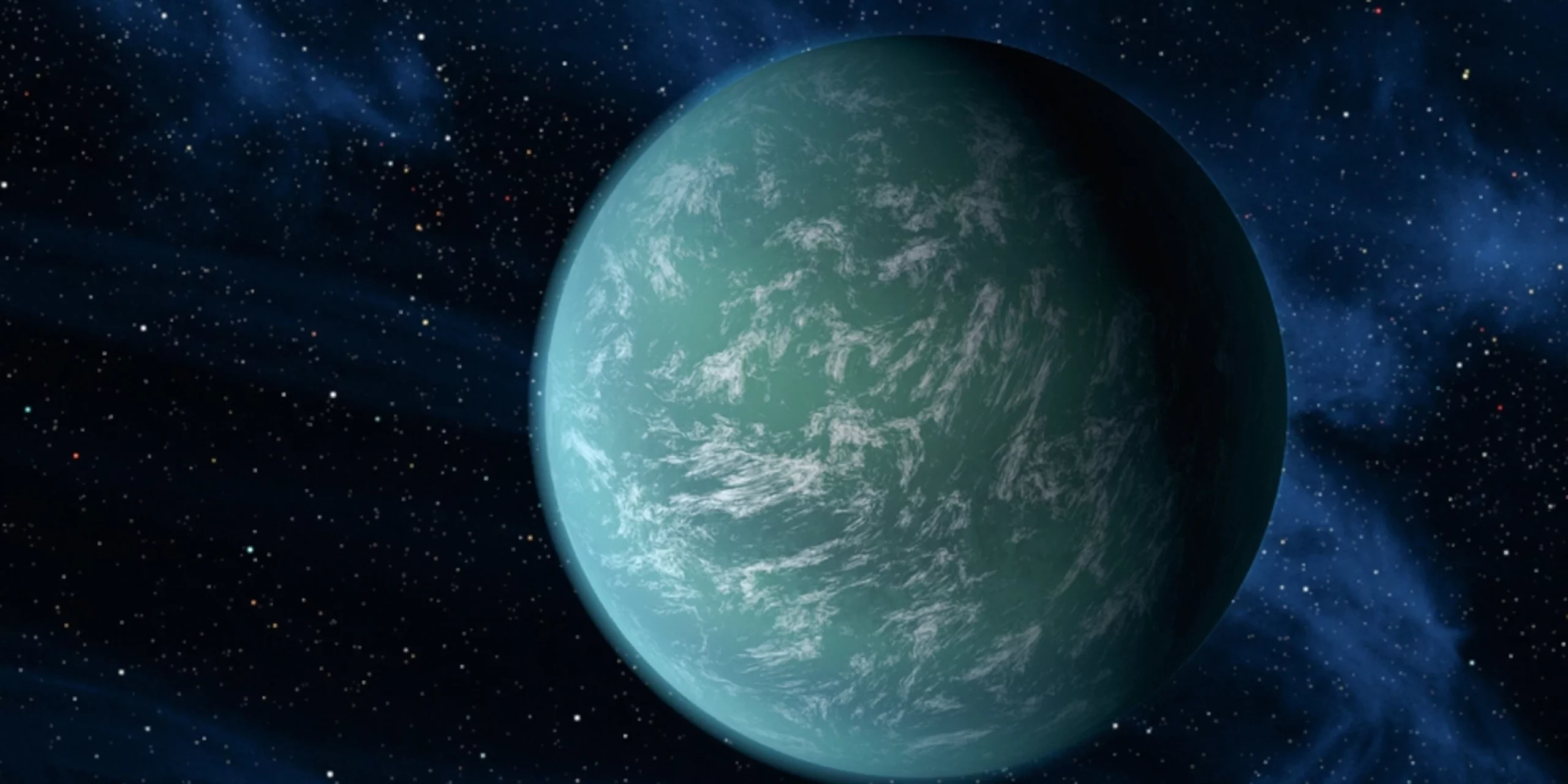Discover the intriguing exoplanet Kepler 22b, located 635 light-years away. Explore the possibilities of life on this mysterious world and the future prospects of space exploration.
The exoplanet Kepler 22b, located 635 light-years away from our current position in outer space, is an intriguing world that has captured the imagination of scientists and space enthusiasts alike.

This exoplanet has become the first discovery within the habitable zone of a Sun-like star, raising the possibility of the existence of liquid water and potentially human life. Although the current distance makes it physically impossible to visit, scientists have used the transit method to gather fascinating information about Kepler 22b, providing a glimpse into the features that make this exoplanet an object of great scientific interest and speculation.
Kepler 22b: A Mysterious and Captivating World
Kepler 22b presents itself as a mysterious and captivating world due to its location within the habitable zone. This region around a star allows for a planet's temperature to be suitable for the existence of liquid water, one of the essential components for life as we know it.
The possibility that Kepler 22b may have the necessary conditions to support life has generated great excitement in the scientific community and opened up new perspectives on the diversity of planetary systems.
An Unusual and Potentially Habitable Landscape
The study of Kepler 22b has revealed intriguing features that define its landscape. With a mass 36 times greater and a radius 2.5 times larger than Earth, Kepler 22b exhibits peculiarities that make it unique. For instance, it has been theorized that the planet may be in a state of "tidal locking," meaning that one side is always facing the star while the other remains in perpetual darkness.
This would result in extreme climatic conditions, with one side of the planet scorched by heat and the other plunged into polar cold. These conditions pose significant challenges for the adaptation and survival of potential life forms on Kepler 22b.
Additionally, Kepler 22b is estimated to have an average temperature ranging between 15 and 22 °C, similar to Earth's spring-like climate. This temperature range could be conducive to the existence of diverse ecosystems and the presence of biological organisms. However, researchers also caution that the extreme variations between the illuminated and shaded sides of the planet could generate turbulent weather conditions that would be challenging for any form of life.
Kepler 22b: A Destination for Future Exploration
While physical visitation to Kepler 22b remains a distant goal, the study of this exoplanet and others like it plays a crucial role in expanding our knowledge of worlds beyond our own. Technology and scientific advancements continue to bring us closer to the possibility of exploring and better understanding these distant exoplanets.
Space exploration and future colonization also become relevant topics when considering the prospect of living on Kepler 22b. As our understanding of exoplanets and technology advances, we may find ways to overcome the challenges and establish human settlements in remote corners of space. The possibility of Kepler 22b as a destination for future exploration invites us to envision a world where humanity ventures beyond the boundaries of Earth in search of new homes and knowledge.
But what if you lived there
If you were to live on the exoplanet Kepler-22b, you would experience an environment completely different from Earth. Here are some key features and possible scenarios you might face:
- Location and environment: Kepler-22b is an exoplanet located around 600 light-years away from Earth in the constellation Cygnus. It is slightly larger than Earth and orbits a Sun-like star called Kepler-22. The environment on Kepler-22b would be significantly different due to the distance and specific conditions of that planet.
- Climate and atmosphere: Scientific information about Kepler-22b is limited, but it is believed to be a planet located in the "habitable zone" of its star, which means it could have liquid water on its surface. However, without more data, we cannot be certain about the specific climate conditions. It could have an atmosphere different from Earth's and distinct geographical features.
- Habitability: Although it is in the habitable zone, that does not necessarily guarantee the presence of life or suitable conditions for humans. In addition to the availability of liquid water, factors such as atmospheric composition, radiation, gravity, and the presence of natural resources would be determinants for habitability.
- Technological challenges: Traveling to Kepler-22b would be extremely difficult and currently beyond our technological capabilities. Getting there and establishing a self-sustaining colony would require significant advancements in space exploration and the development of advanced sustainability technologies.
- Isolation and communication: The distance between Kepler-22b and Earth would entail communication delays of several hundred light-years. This would mean that real-time communication with family and friends on Earth would be virtually impossible, which could lead to a sense of isolation and separation.
Overall, living on Kepler-22b would mean facing an alien and challenging environment with unknown conditions and the need to adapt to a world completely different from what we are accustomed to on Earth. It would be a true scientific, technological, and emotional challenge.
Conclusion: Kepler 22b raises fascinating questions and immerses us in a realm of possibilities. While life on this exoplanet remains an enigma, scientific and technological advancements bring us closer to answering whether we could one day inhabit Kepler 22b or similar worlds. Space exploration offers us a window into the vastness and diversity of our universe, and the future of space colonization and research promises exciting discoveries and unprecedented opportunities.
Deja una respuesta


IMPRESCINDIBLES DE LA SEMANA